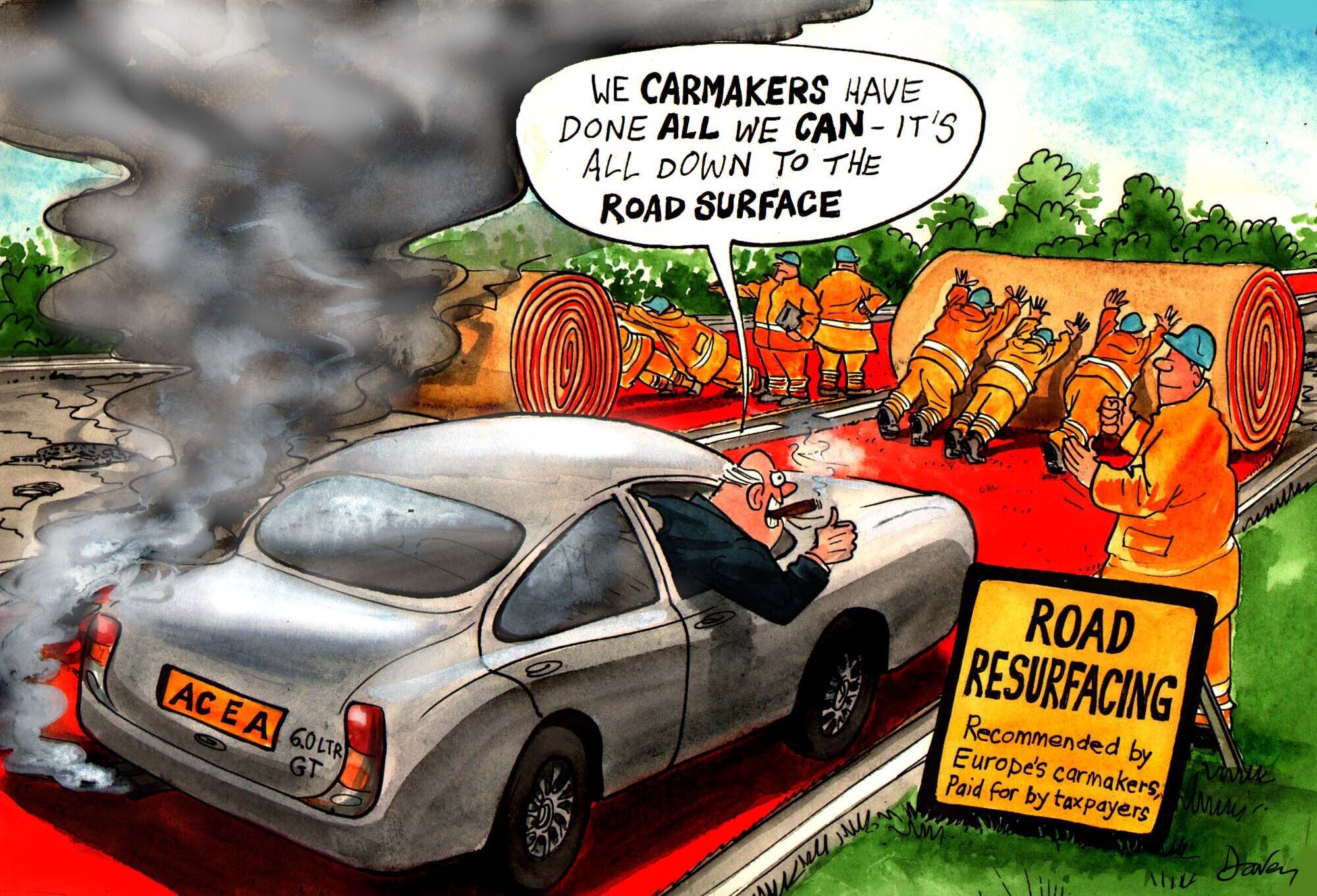
Carmakers’ madcap €520bn road resurfacing scheme abdicates responsibility for CO2
European automakers’ leaked plans to cut carbon emissions of cars and trucks are an attempt to wash manufacturers’ hands of any responsibility for reducing their climate impact, sustainable transport group Transport & Environment (T&E) has said.
Interested in this kind of news?
Receive them directly in your inbox. Delivered once a week.
The report by industry body ACEA grossly exaggerates the car fuel efficiency gains made since 2005 – over half of which have not been achieved on the road [1], but only in the laboratory. ACEA’s report also recommends resurfacing all Europe’s roads with lower rolling resistance tarmac at an estimated cost of at least €520 billion, equating to saving carbon at €1,000 per tonne of CO2. The current ETS carbon price is €5/tonne.
Carlos Calvo Ambel, transport and energy analyst at T&E, said: “The car industry is completely out of touch with reality. They want governments to spend over €500 billion to resurface all of Europe’s roads but do nothing themselves. This won’t restore the public’s trust in them after dieselgate.”
Meanwhile, an independent expert study [2] published today suggests the GHG savings hoped for by ACEA are grossly overstated. For example, expensive ‘intelligent transport systems’ would only cut CO2 emissions by 1% beyond business as usual, far less than claimed by carmakers. Instead, the study finds that EU policies, and vehicle efficiency standards in particular, would make a sizeable contribution to achieving the required carbon reductions in the road transport sector.
Carlos Calvo Ambel concluded: “Fuel efficiency standards are a proven and effective way to reduce carbon emissions from vehicles. They stimulate growth and jobs, save drivers money and reduce emissions. So what we really need is ambitious fuel economy legislation for new cars and trucks, starting from 2025.”
The expert study’s figures on greenhouse gas (GHG) savings from using biofuels and gas in road transport also contrast sharply with claims by ACEA.
Cars in 2014 were on average heavier than in 2004 despite the ‘innovative’ weight reduction methods that carmakers – which are resisting the introduction of new CO2 targets – say they are using.
Notes to editors:
[1] Mind the Gap 2015, Transport & Environment https://www.transportenvironment.org/publications/mind-gap-2015-closing-c…
[2] Ricardo Energy & Environment, 2016. SULTAN modelling to explore the wider potential impacts of transport GHG reduction policies in 2030.
For more information, read T&E’s briefing:
How the European car industry plans to meet the climate challenge